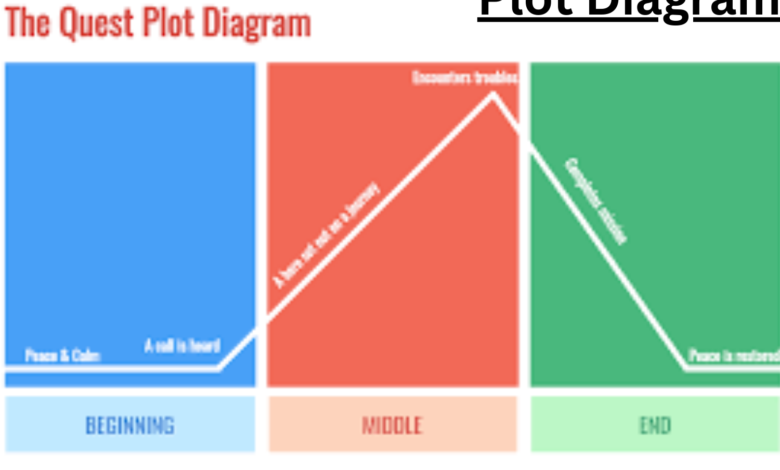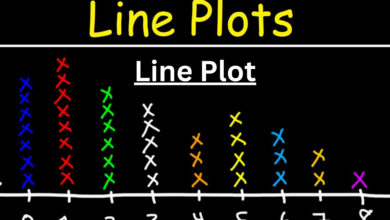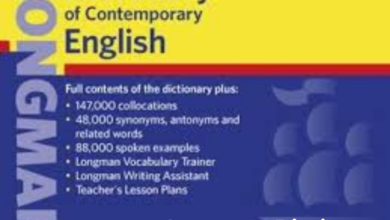Plot Diagram A Comprehensive Guide to Understanding Story Structure

Every great story has a structure that guides its journey, and understanding that structure can unlock the secrets to captivating storytelling. Enter the plot diagram—a visual representation of how stories unfold. Whether you’re an aspiring novelist, a screenwriter, or simply someone with a passion for storytelling, grasping the intricacies of plot diagram is essential.
Think of it as your roadmap through the twists and turns of narrative development. From setting up characters and conflicts to navigating climactic moments and resolutions, each element plays a crucial role in creating engaging tales. This guide will take you through every stage of a plot diagram while providing insights on how to apply these concepts to your own writing projects.
Ready to dive deeper? Let’s explore what makes stories resonate by dissecting their foundational elements!
The Five Stages of a Plot Diagram
Every story has a structure. The five stages of a plot diagram provide that framework.
First comes the exposition. This is where characters and settings are introduced, laying the groundwork for what’s to come.
Next is rising action. Conflict develops here, creating tension and building anticipation in readers. Complications arise, making it impossible for characters to achieve their goals easily.
Then we reach the climax, the turning point of the narrative. Emotions run high as tensions peak; decisions made here will alter the course of events.
Following this is falling action. The aftermath begins to unfold, resolving subplots and guiding characters towards closure.
Resolution ties up loose ends and provides clarity on how everything concludes. It leaves readers satisfied but often pondering deeper themes explored throughout the journey. Each stage plays a vital role in crafting an engaging story that resonates with audiences.
A. Exposition
Exposition sets the stage for your story. It introduces the characters, setting, and initial conflict. This foundational element helps readers understand who’s involved and where events are taking place.
Think of it as a warm welcome into a new world. Here, you establish context and background information that shape your narrative. A well-crafted exposition grabs attention without overwhelming the audience.
Characters should be relatable or intriguing from the start. Readers need to connect with them emotionally to invest in their journeys. The setting also plays an essential role; vivid descriptions can transport readers right into the heart of your story.
As you unfold this layer of your plot diagram, balance is key. Provide enough detail to pique interest but leave some mystery to encourage further reading. This artful dance between clarity and intrigue propels your narrative forward smoothly.
B. Rising Action
Rising action is the heartbeat of a story. It builds tension and propels the narrative forward. This stage occurs after the exposition, where characters are introduced and initial conflicts emerge.
During rising action, obstacles begin to multiply. Characters face challenges that test their resolve and development. These hurdles create suspense, making readers eager to discover what comes next.
Every twist and turn deepens engagement with the audience. Secrets may be revealed or alliances formed, leading to heightened stakes for all involved.
This phase sets up the climax—the ultimate confrontation in your narrative arc. Without robust rising action, that pivotal moment lacks impact. Every event during this stage should feel purposeful, driving toward an inevitable clash or revelation that keeps readers on edge.
As writers weave intricate plots filled with conflict and intrigue, rising action breathes life into stories while inviting deeper exploration of themes and character arcs.
C. Climax
The climax is the turning point of a story. It’s where tension peaks, and everything changes for the characters involved. This moment is often filled with intense emotions and high stakes.
During the climax, conflicts come to a head. Characters are forced to confront their greatest challenges or fears. The outcome at this stage shapes what happens next in the narrative.
It’s crucial for writers to build up to this moment effectively. Foreshadowing can create anticipation, making the eventual confrontation even more impactful. Readers should feel invested in what unfolds.
This pivotal scene can take many forms—a fierce battle, an emotional revelation, or a critical decision that alters relationships forever. Regardless of its shape, it leaves a lasting impression on both characters and audience alike.
Crafting your climax well ensures it resonates long after the story ends—creating memorable experiences that stick with readers.
D. Falling Action
Falling Action serves as the bridge between the climax and resolution. Here, the tension from earlier events begins to dissipate. Characters start confronting the consequences of their actions.
This stage is crucial for character development. Readers witness how protagonists react after intense moments. Their choices reveal deeper motivations and emotions.
Subplots often find closure during this phase. Loose ends are tied up, giving a sense of completion to secondary storylines while still keeping the main narrative in focus.
The pacing usually slows down compared to previous stages. This allows readers to absorb what has happened and prepare for the conclusion ahead.
Falling Action sets up a satisfying end by showcasing recovery or reflection. It paves the way for resolutions that resonate with both characters and audiences alike.
E. Resolution
Resolution serves as the final act of a narrative, where all threads come together. It’s the moment when conflicts are resolved, questions answered, and characters find closure.
This stage provides readers with satisfaction. It’s essential for tying up loose ends that may have lingered throughout the story. Characters reflect on their journeys, showcasing growth or change.
A strong resolution can evoke emotions, leaving an impact long after the last page is read. Whether it’s a happy ending or a poignant farewell, this part defines how audiences perceive the entire tale.
In crafting your resolution, think about what you want readers to take away from your story. Ensure it resonates with them and feels authentic to the journey they’ve experienced alongside your characters.
Examples of Plot Diagrams in Popular Literature and Film
Plot diagrams can be found in countless stories, both in literature and film. One classic example is “Romeo and Juliet” by William Shakespeare. The exposition introduces the feuding families. Tension builds during the rising action as Romeo and Juliet fall in love. The climax strikes when they decide to marry secretly.
In modern cinema, consider “The Lion King.” Here, Simba’s journey begins with a peaceful exposition of his life in Pride Rock. As he flees after Mufasa’s death, the rising action unfolds through betrayal and self-discovery. The climax occurs during a fierce battle against Scar.
Another great example is J.
K. Rowling’s “Harry Potter and the Sorcerer’s Stone.” Harry learns about his past in the exposition phase before encountering challenges that lead to an exhilarating climax at Hogwarts—where good battles evil directly.
These examples illustrate how plot diagrams help structure engaging narratives across different genres.
How to Use a Plot Diagram for Your Own Writing
Using a plot diagram can transform your writing process. Start by sketching out the main components of your story on a simple diagram. This visual guide helps you see the overall structure.
Begin with the exposition. Introduce your characters and setting clearly. Make sure readers know what’s at stake early on.
Next, map out rising action events that build tension. Think about how each scene escalates conflict or deepens character relationships.
When you reach the climax, ensure it feels impactful. This is where everything changes, so make it memorable.
Afterward, outline falling action scenes that lead to resolution naturally. Don’t rush; allow space for emotional closure within your narrative arc.
Create a satisfying resolution that ties up loose ends while leaving room for reader interpretation or future stories to be explored. Use this framework as a flexible tool—adjust as inspiration strikes!
Common Mistakes to Avoid in Plot Development
One common mistake in plot development is introducing too many characters at once. This can overwhelm readers and dilute the story’s focus. Each character should serve a purpose, driving the plot forward.
Another pitfall is neglecting character development. Characters need to evolve throughout the narrative. If they remain static, the story loses depth and engagement.
Failing to establish clear stakes can also hinder your plot’s effectiveness. Readers must understand what’s at risk for both protagonists and antagonists.
Don’t rush through essential scenes or transitions. Allow moments of tension to build naturally rather than forcing action without context.
Taking time to reflect on these elements can significantly enhance your storytelling craft.
Tips for Creating a Memorable and Engaging Plot
Creating a memorable plot starts with strong characters. They should have distinct goals, desires, and conflicts. Readers connect more deeply when they can empathize with the characters’ journeys.
Another key aspect is pacing. Keep the story moving by balancing action and reflection. Too much action can overwhelm readers, while too little might lose their interest.
Don’t shy away from twists. Surprising your audience keeps them engaged and eager to turn pages. Just ensure that any surprises feel organic rather than forced.
Consider themes that resonate on a personal level. When readers find something relatable in your narrative, it leaves a lasting impression.
Make use of vivid settings to enhance mood and tone. A well-crafted backdrop enriches the storytelling experience and immerses readers into your world fully.
Conclusion
Understanding the plot diagram is essential for anyone interested in storytelling. It serves as a roadmap, guiding you through the various stages of your narrative. Each element—from exposition to resolution—plays a crucial role in crafting a compelling story that resonates with your audience.
As you embark on your writing journey, keep these stages in mind. They will not only help structure your plot but also enhance character development and thematic depth. Avoid common pitfalls by remaining aware of pacing and ensuring each part flows seamlessly into the next.
The art of plotting can elevate your writing to new heights. With practice and attention to detail, you’ll create stories that captivate readers from beginning to end. Use this guide as a reference point whenever you need clarity or inspiration while developing your own narratives.
Embrace the power of storytelling today!




